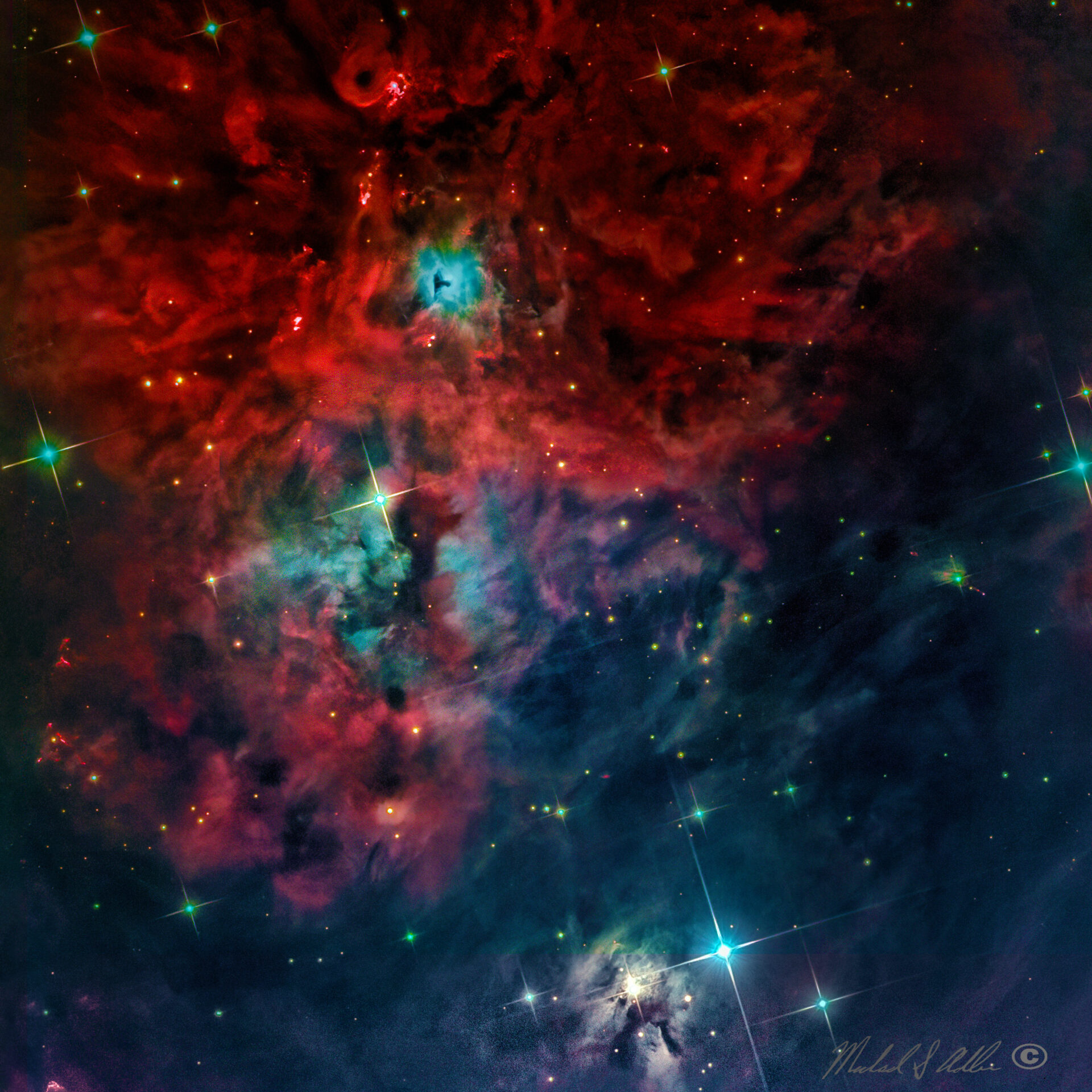Optics: Planewave CDK17
Mount: Software Bisque Paramount ME
Camera: Various
Filters: Astrodon 3nm Ha,LRGB, Ha=10x30min, L=13x20min, R,G,B=14x20min, total 65 images over 22.3 hrs
Dates/Times: Nov 2019
Location: Heavens Mirror, New South Wales, Australia
Exposure Details: CDK17 Ha,LRGB
Acquisition: MaxIm DL
Processing: MaxIm DL used for calibration and stacking, L+Ha combined to make a synthetic luminance, R+Ha,G,B combined for color image and final processing done in PS2022
NGC 1999
Original price was: $65.00.$52.50Current price is: $52.50.
NGC 1999,South of the large star-forming region known as the Orion Nebula, lies bright blue reflection nebula NGC 1999. At the edge of the Orion Molecular Cloud complex some 1,500 light-years distant, NGC 1999’s illumination is provided by the embedded variable star V380 Orionis. That nebula is marked with a dark sideways T-shape near center in this cosmic vista that spans about 10 light-years. The dark shape was once assumed to be an obscuring dust cloud seen in silhouette against the bright reflection nebula. Recent infrared images indicate the shape is likely a hole blown through the nebula itself by energetic young stars. The knots of bright red nebulosity just above NGC 1999 particularly the circular object with a hole are designated as HH1 and HH2, short for Herbig-Haro 1 and Herbig-Haro 2. HH-1 and HH-2 were identified by Guillermo Haro and George Herbig in the 1950’s. These objects are now known to represent jets of gas being ejected by protostars (baby stars) and are recognized as part of star formation. Imagine a disk of dust obscuring the protostar. This baby star is shooting out jets of gas at high speed (estimated at 100,000 miles per hour or more) from its poles. The high-speed gas is colliding with and heating up the ambient gas and dust in the surrounding area and causing that gas to glow. The HH object in this image is actually associated with a protostar hidden somewhere in the dark region that is obscuring dust.
This object is done in true color LRGB with the addition of narrow band Hydrogen emission accenting the red in the image. The image was taken in Rio Hurtado Chile using a 17″ Planewave telescope and processed by Michael Adler.


